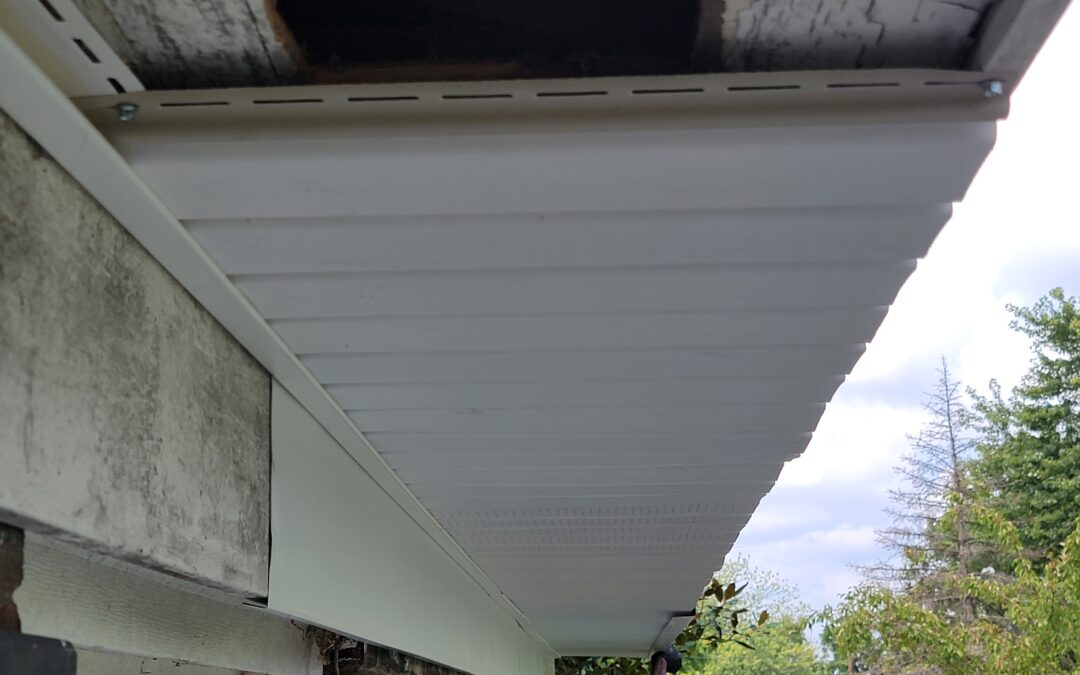Vinyl soffit installation and repair play a pivotal role in maintaining the structural integrity and aesthetic appeal of your home. This essential component not only protects your eaves and rafters from moisture and pests but also enhances the overall look of your property. In this comprehensive guide, brought to you by Gutters Etcetera in Cincinnati, Ohio, we will delve into the benefits of vinyl soffit, explore best practices for installation and repair, and provide expert insights on how to ensure your soffit serves your home effectively for years to come.
Benefits of Vinyl Soffit
- Durability and Weather Resistance: Vinyl soffit is renowned for its exceptional durability and resilience against the elements. Unlike traditional wood soffits, vinyl is impervious to rot, warping, and decay, making it an ideal choice for Cincinnati’s varied climate.
- Low Maintenance: Once installed, vinyl soffit requires minimal maintenance. It doesn’t need painting, staining, or sealing, saving you both time and money in the long run.
- Pest Resistance: Vinyl soffit provides a barrier against common pests like insects and rodents, ensuring they don’t find their way into your attic or crawl spaces.
- Ventilation and Airflow: Soffits often come with perforations or vents that allow air to circulate in your attic, preventing moisture buildup and maintaining proper ventilation.
- Aesthetic Versatility: Vinyl soffit comes in a wide range of colors and styles, allowing you to choose an option that complements your home’s architecture and design.
Best Practices for Vinyl Soffit Installation
- Professional Assessment: Before any installation, it’s crucial to have a professional assess your existing soffit and recommend the best approach. They will identify any structural issues or areas that may require additional support.
- Proper Ventilation Design: When installing soffit, ensure that it integrates with your existing ventilation system. This promotes adequate airflow in your attic, preventing issues like condensation and mold growth.
- Precise Measurements and Cutting: Accurate measurements are crucial for a seamless installation. Each piece of vinyl soffit should be measured, cut, and secured with precision to ensure a snug fit.
- Adequate Fastening: Properly secure the soffit panels to the eaves and rafters using appropriate fasteners. This ensures stability and prevents any potential sagging or warping over time.
- Sealing and Caulking: Seal all joints and edges with high-quality caulk to provide an extra layer of protection against moisture and pests.
Vinyl Soffit Repair: Tips and Techniques
- Thorough Inspection: Begin by inspecting the entire soffit for signs of damage. This may include cracks, holes, or areas of discoloration.
- Replacement of Damaged Sections: In cases of extensive damage, it’s advisable to replace the affected sections rather than attempting repairs.
- Patch and Seal Small Areas: For minor damage, clean the affected area, apply a vinyl patch, and seal it with a high-quality vinyl-compatible sealant.
- Regular Maintenance: Schedule routine inspections to catch any potential issues early on. Addressing minor damage promptly can prevent more extensive repairs in the future.
Conclusion
Vinyl soffit installation and repair are critical components of your home’s maintenance. Choosing vinyl offers durability, low maintenance, and resistance to pests and the elements. When it comes to installation, professional assessment, precise measurements, and proper ventilation are key. For repairs, a thorough inspection and prompt action will ensure your soffit continues to protect and enhance your home for years to come. Trust Gutters Etcetera in Cincinnati, Ohio, for expert advice and quality service in all your vinyl soffit needs.

